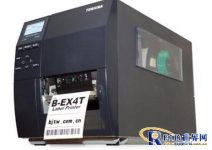
Toshiba RFID printer helps apparel companies improve management efficiency
[ad_1]
For clothing manufacturers, the demand for personalized services of products is extremely strong and the product updates and changes are rapid. The brand clothing industry is the most suitable industry for applying RFID technology due to its characteristics.At the time when various industries around the world are experimenting with RFID, the world’s apparel industry has also emerged such as Gap, Benetton, etc.RFIDDirect beneficiaries of technology. The development of China’s Internet of Things has made the RFID technology more widely used as a carrier of information collection and transmission.
As clothing products are characterized by rapid changes in colors, styles, and varieties, clothing manufacturing companies are required to continuously improve their production, inventory, and distribution turnover. Out-of-season varieties should be cleared out of the counter quickly and replaced with new varieties. At the same time, it is also necessary to ensure that most of the products produced can be sold, and that a large amount of unsalable inventory will not be generated is a key issue for clothing companies to consider.

Clothing companies often encounter the following problems:
1. The statistics of packing data such as wrong packing, missing packing and multiple packing caused by human factors are inaccurate and slow;
2. Inventory requires a lot of manual work, and the processing speed is slow;
3. The product delivery also requires a lot of manual work, and the statistics are slow, which often causes the supply cycle to be too long, which directly affects the production efficiency of the enterprise;
4. Untimely and inaccurate inventory data statistics will also affect production efficiency, such as: the replenishment cycle is too long, etc.;
5. Accounts and objects are prone to errors in inventory management;
6. It is not clear where each product is located, nor can it be known how many products are in a certain location.
solution
The emergence and application of RFID technology will greatly promote the development of the clothing industry in terms of production, inventory, distribution, sales, retail store management, etc., while playing a leading role in inventory management and clothing tracking management.This also responds to the internationally advocatedInternet of ThingsDevelopment concept, application of RFID technology, the status of each garment is visible in real time.
When the production task is issued, the RFID printer prints electronic labels in batches according to the task list-the clothing label is used as the carrier to be installed on each piece of clothing in the manufacturing process. These labels store electronic information such as clothing style, size, color, and intended destination. Through the real-time tracking of goods, the management efficiency of all major aspects of garment production enterprises from manufacturing, circulation to inventory control has been greatly improved.
In inventory management, the size and specifications of all inventory clothes can be managed and classified through the ID number of the electronic tag. Once the shipment order is received, the operator can immediately know the exact location of the required specifications of clothing storage through the RFID reading device. RFID technology eliminates human error factors and does not require visual reading.
success case
As Toshiba has a rich product line and is in a leading position in the field of RFID technology, many well-known apparel companies have maintained close contact with us.
A production base of the Finnish L-Fashion Group in Suzhou makes inventory management simple and fast. At the same time, the delivery time and inventory control are optimized to minimize the delivery error rate.
Clothing manufacturers can also use RFID tracking systems to effectively manage sales terminals. The label of each piece of clothing is tracked by the system, regardless of whether the clothing is placed in a box in a warehouse or on a shelf in a shopping mall. As long as customers have demand, sales staff can tell consumers how many colors are available for their fancy styles through portable barcode readers, and can find the target products for customers in the first time, avoiding traditional manual search. Time spent and loss of customers. According to statistics from relevant departments, since the US Gap Company applied RFID technology to effectively track and manage clothing, the company’s sales have increased by 20%.
Since the company’s monthly electronic label printing volume has reached 2 million, such a large volume of labels requires very stable hardware equipment. After the early stage of continuous batch operation of RFID printers, printing speed, printing quality, RFID encryption support, etc. In the end, I chose to buy Toshiba products.
The Russian Melon Fashion Group has adopted Toshiba RFID printers at its St. Petersburg headquarters. After the establishment of the Chinese trade organization, it has continued to maintain a cooperative relationship with Toshiba. A large number of electronic labels are printed through RFID printers every month, attached to individual clothing packages and exported to various countries. . Toshiba’s long-standing advantages of the brand and excellent product performance have given customers great confidence, even during the peak sales season, they will not worry about production shutdown due to hardware problems. Not only that, but more other apparel companies plan to use RFID to improve management efficiency in production and logistics.
[ad_2]




